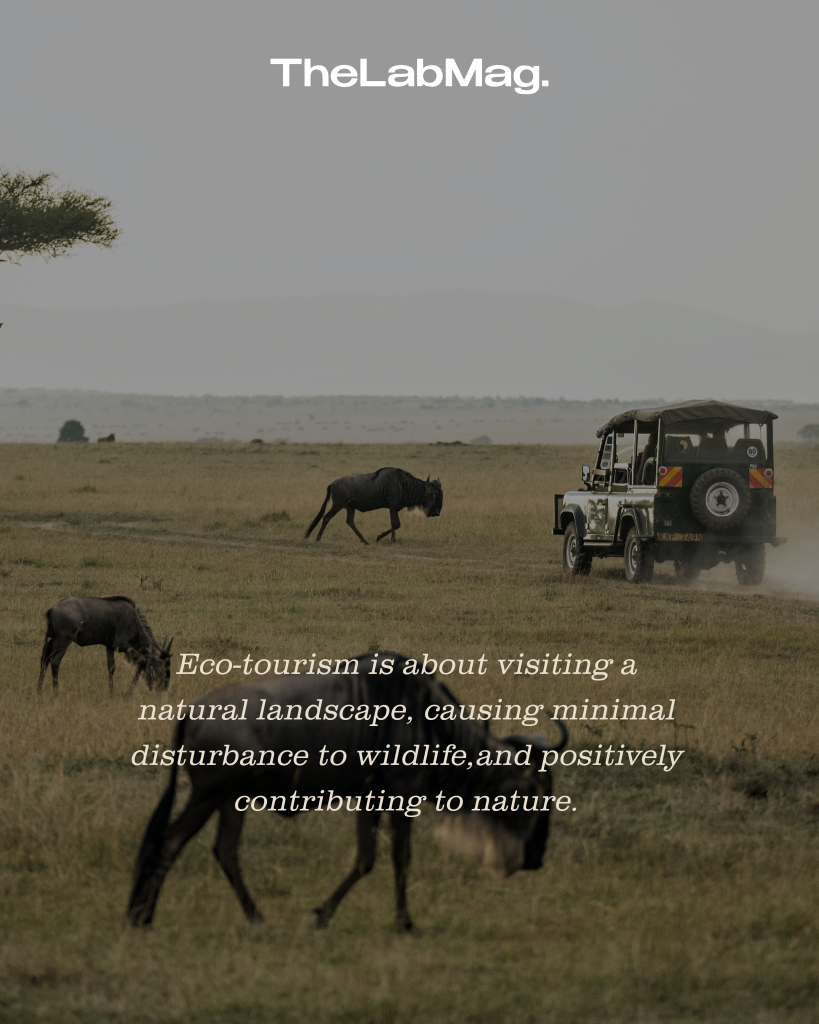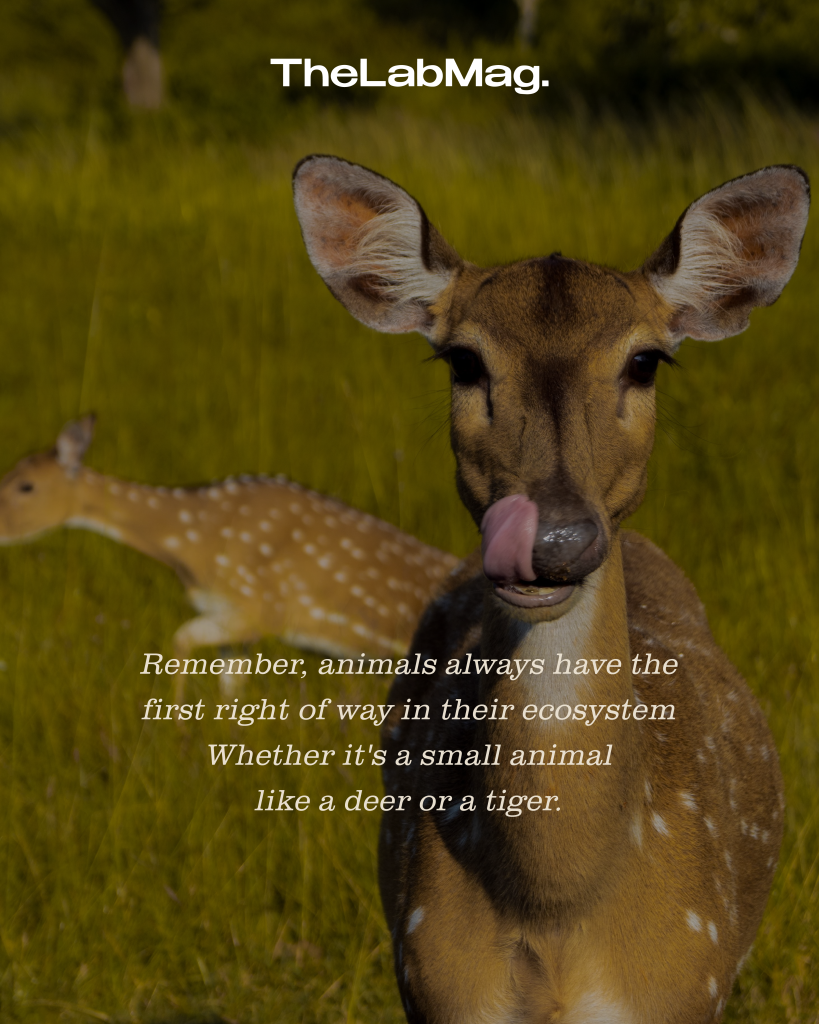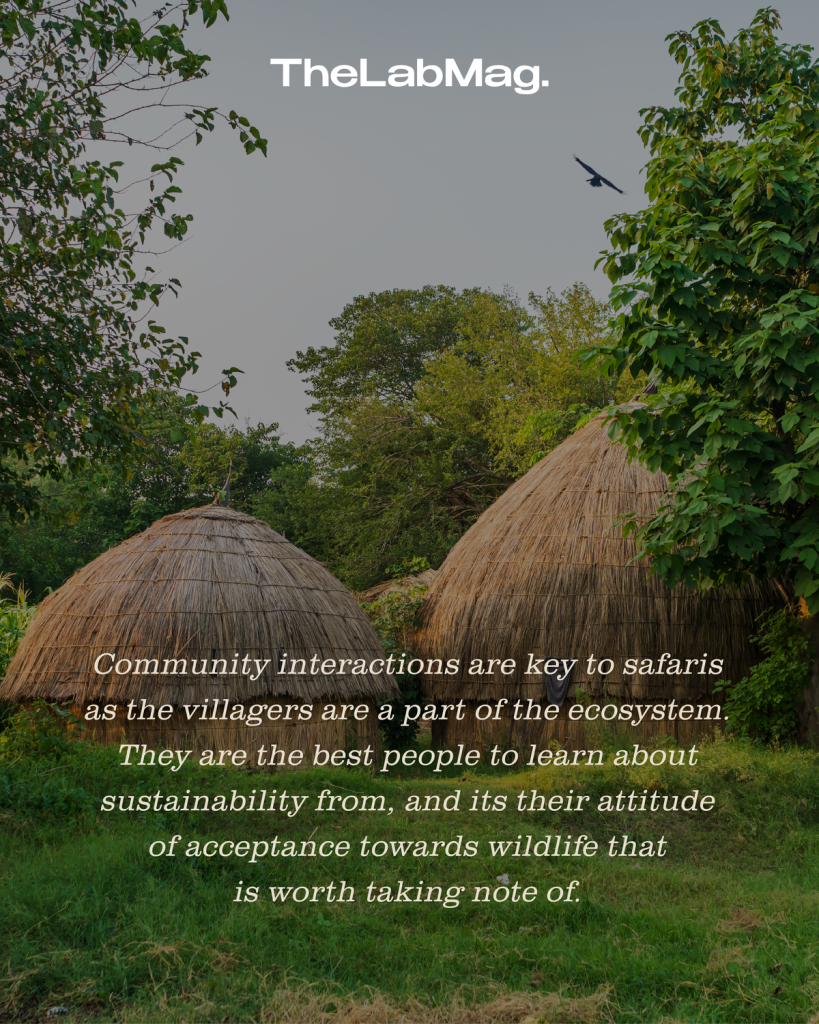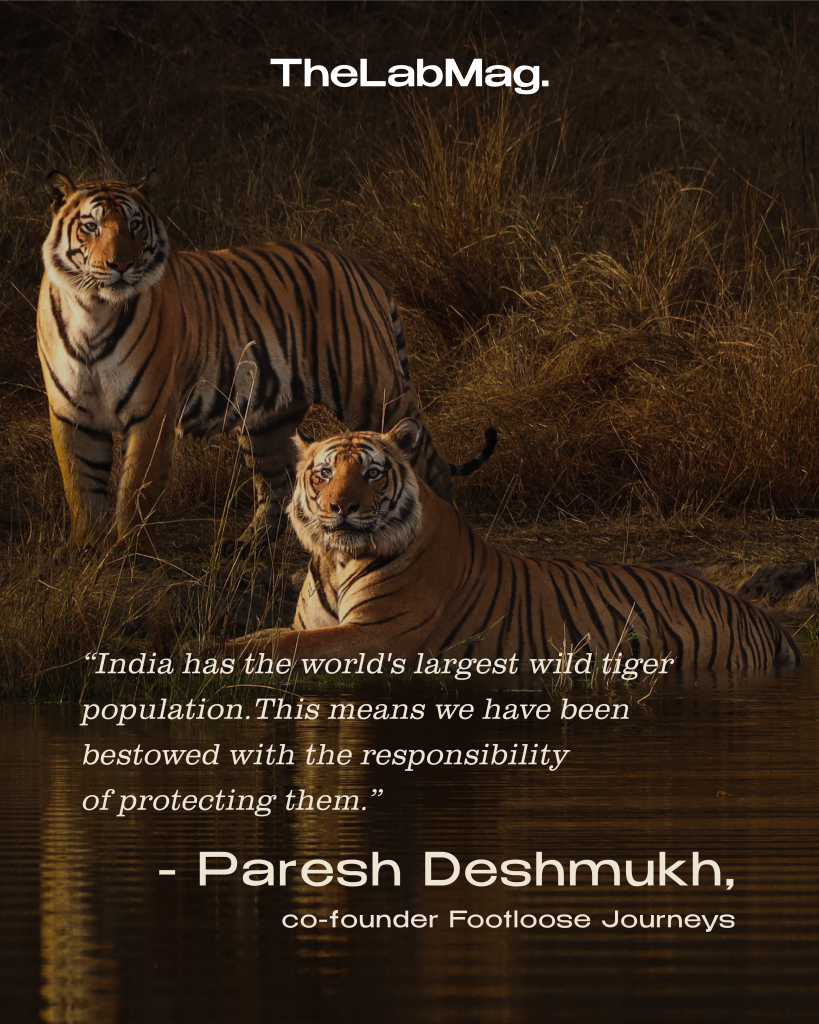
My fondest travel memories almost always include some sort of an encounter with wildlife. Little did I know, I was almost always going on a safari the eco-way. When I was eight-years-old, my parents and I were in a remote village, Bhenswara in Rajasthan’s Jalor district. The local prince had opened his palace up after converting it into a heritage hotel. And thanks to my uncle, a travel journalist, we were invited to be the first guests to experience everything the property had to offer; including a safari in the jungles around. And, who were we trying to spot? The elusive leopard. Alas, no leopard was sighted, except for his pug marks. But I did encounter the ever-present Nilgai, the then endangered blackbuck, and a rogue wild boar during this trip.
Years later, I visited the Velavadar Blackbuck National Park near Bhavnagar to spot blackbucks leaping around and getting their antelopes tangled after a fight. There are endless encounters I have had with the deer and the spotted deer. The nilgai is one animal that never leaves my side (I have spotted it at every national park I’ve been to; and once on the highway between Ahmedabad and Gandhinagar). And, I have had a few big moments too; like seeing the leopards and a pair of lions at Sanjay Gandhi National Park in Mumbai. Needless to say, it’s always been fascinating to wait in anticipation and to observe an animal like it would watch its prey. Except, I was there to just observe, silently.
George of the jungle

“Safaris are exciting. Even after years of doing what I do, every time I’m in the Jeep, it’s exciting,” says Paresh Deshmukh, co-founder of Footloose Journeys, an eco-conscious company that organises safaris and tours across several tiger reserves and national parks in India. This excitement is often mimicked by everyone who’s in that Jeep. It’s why you will see some participants often let out a scream when they spot an animal. “Animals react to our presence, which is not what we are here for. We want to see them in their natural habitat, doing their own thing,” says Deshmukh.
Being quiet on a safari goes a long way. In my experience of venturing into the wild, I have learnt to sit still even when an animal gets close for a sniff. But I’ve always struggled with one idea: Am I causing damage by entering the jungle?
Deshmukh puts me at ease by clearing out that safaris are a big part of eco-tourism. And goes on to break it down. “There are different aspects to eco-tourism. The first, is visiting a natural landscape. The second, is causing minimal to no damage or disturbance to wildlife and nature. The third is positively contributing to nature,” he says.
Naturally, the second and third are the hardest to do. But it’s companies like Footloose Journeys that can help you go on an safari the eco-way.
Treading lightly for low impact

At the risk of sounding like a broken record, it’s important to remember not to get too excited or close to animals. “People tend to go close to the animal to take photos and intrude into their comfort zone. Unless we are forced to pass at a close distance, we have to stay away from the animal,” warns Deshmukh. It’s one way to cause low impact.
And then, there are other ways. “There’s always going to be elemental touch. We wear shoes everywhere we go…” explains Deshmukh. So, some amount of impact is unavoidable as you legally are not allowed to walk in some jungles. Furthermore, one is rarely allowed to enter the core of the jungle in order to let the animals thrive in their habitats. Safaris are usually in non-restricted parts of the forest and follow a path that won’t cause damage to the ecosystem. But to further reduce causing damage, Deshmukh’s company began efforts to reduce the waste generated at safaris and camps every time they visit.
They encourage participants to carry snacks in tin boxes, carry steel water bottles, and also provide steel tiffin to hotels who pack them a breakfast or meal if their packaging is going to generate waste. Any other waste, if generated, is carried back to the base city. “We realise this is not the most suitable alternative and we are thinking of ways to improve our waste management techniques,” but this is all programmed into Footloose Journeys’ orientation before any trip you might take with them.
Becoming one with the ecosystem

The other key aspect of going on a safari the eco-way, is one that can also help you bring some positive contribution to the jungle. Involving local communities in eco-tourism and learning about how they live their life is as crucial as watching an animal from a distance.
There are efforts by local authorities and businesses already underway. Many resorts have staff who are from the local villages, some locals have even developed their own homestays. But Deshmukh says, “Engaging with the local community to understand life around the forest is important.” His company organises meet-ups at villagers’ homes for tea, so that camp participants can, “learn about true sustainability.”
The idea is simple: Locals who live around jungles are part of the ecosystem. Their interaction with the forest is very different from anyone else’s as they often face leopard attacks, have their farms destroyed or even cattle eaten. “It’s their acceptance, not their tolerance of wildlife that we need to learn from. The kind of life they lead, resources they use, and taking only what they need,” is true sustainability, believes Deshmukh.
Footloose Journeys works with different groups to curate different experiences. They organise walks with forest guides to help educate participants better, work with an NGO who works towards the upliftment of the Pardhi tribe, among other similar activities.
Their core reason for such experiences is to educate. Calling himself a “naturalist”, Deshmukh explains that when he first set up his company, he felt it was his job to educate people about the environment, the conservation of animals, the core buffer areas, the ecosystem, and more.
Practicing the eco-way

Speaking to Deshmukh, I realise there’s little to elaborate and a safari is probably the easiest way to travel sustainably. He makes it even more easier for me, “Conservation is simply everyone doing their best to help. It can only be avoiding single-use plastic or avoiding shopping often. By doing these small things, you can help protect a tiger too.”
Looking back, my family trips seem like they were sustainable: We travelled mostly by train, my mother always packed snacks in tin boxes or cloth bags that we washed and reused, and we usually planned holidays around sanctuaries or went to spot migratory birds. I feel a little less gloomy and more hopeful speaking to Deshmukh and remind myself that if I continue to vacation like I used to with my parents, perhaps I am contributing positively too.
Meanwhile Deshmukh leaves me with a final nugget, “There’s a study I read that said that generally all messages about climate change are about doom. As humans, we tend to block out negative emotions. So, rather than showing the doom, I believe in showing them the beauty of nature. Then they will start caring about it too.”

